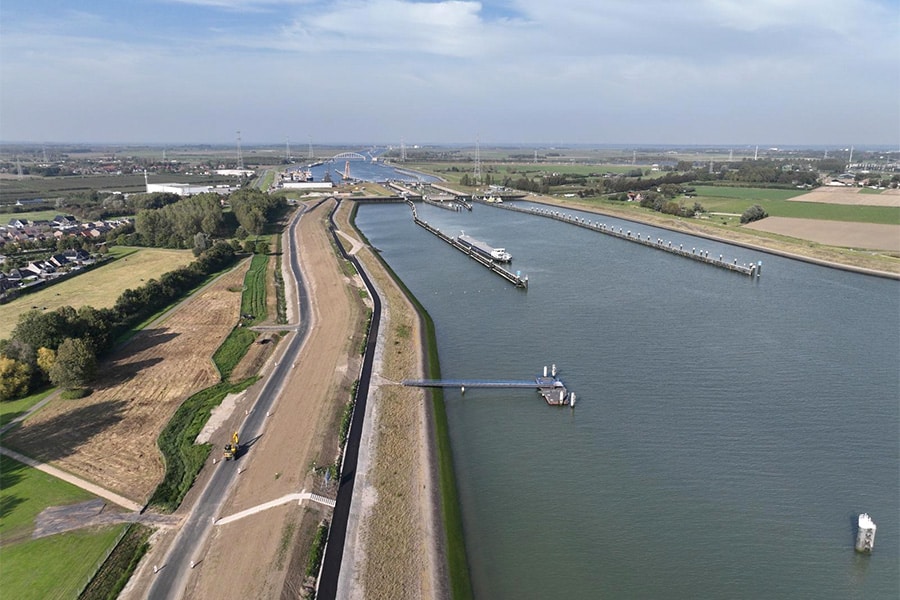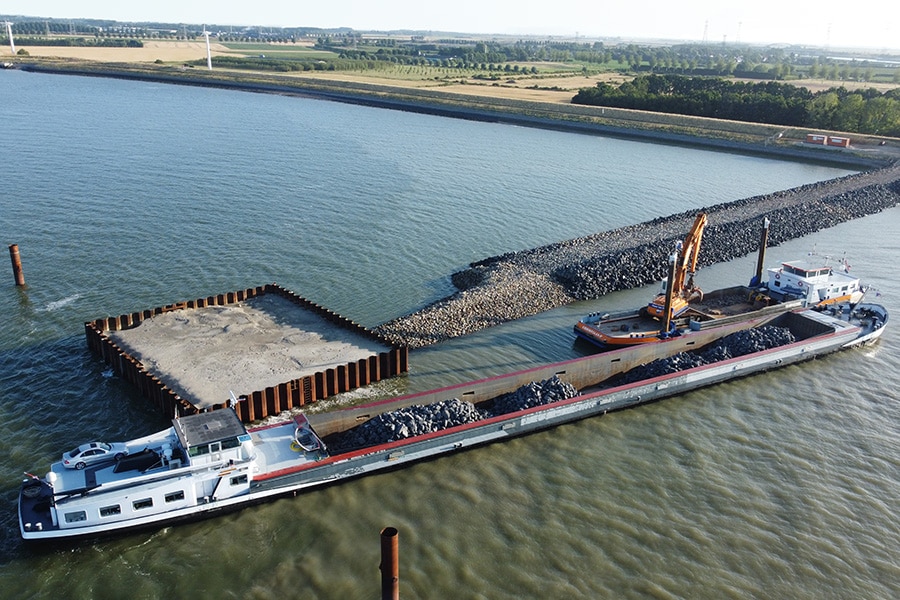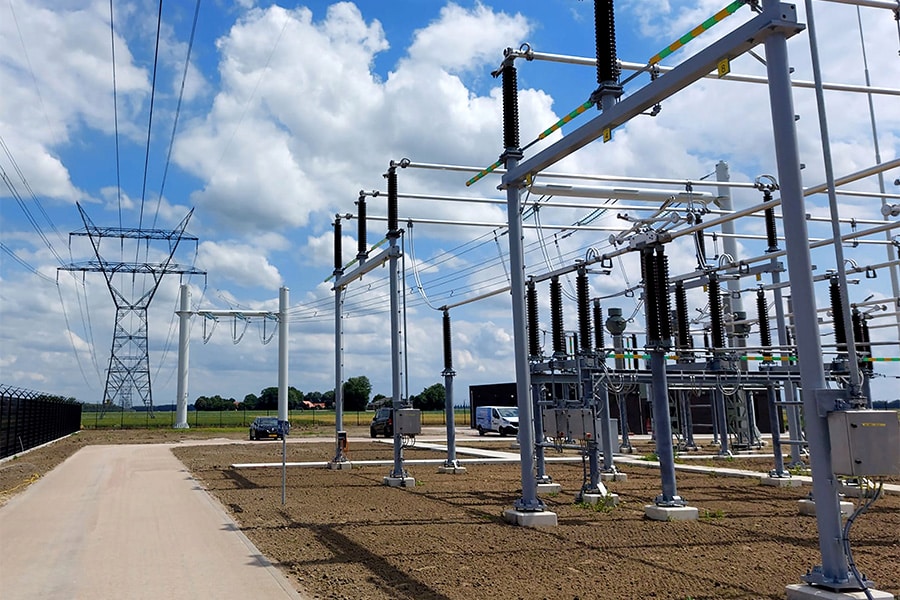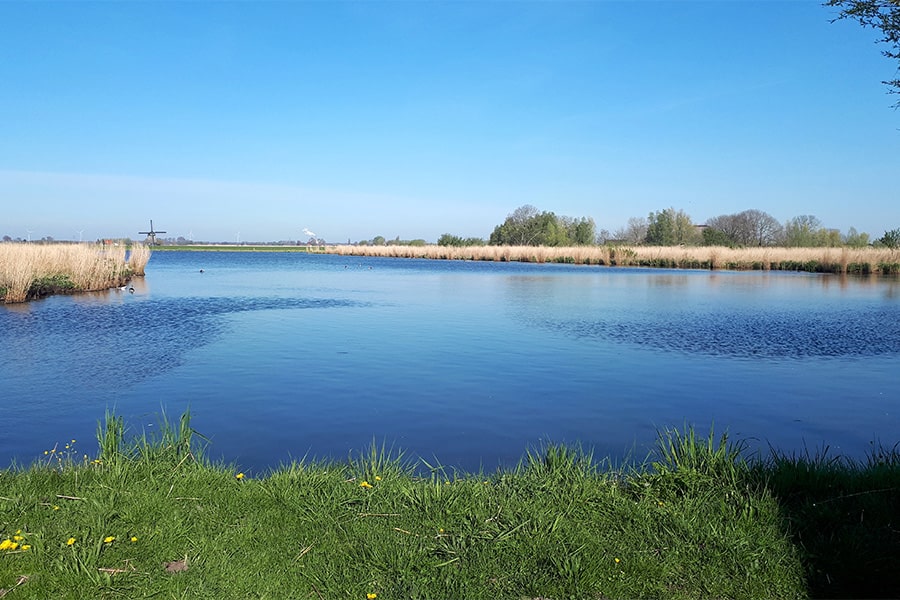
Climate adaptation: building with nature
The hydraulic engineering sector is pre-eminently a sector working on climate adaptation. It is a sector that has always been working with the elements and knows how to deal with them. Many projects are also realized with natural applications, for example for our coastal defenses. The sand motor is a striking example of this. But lessons can also be learned in other areas from the way the hydraulic engineering sector deals with climate adaptation. An interview with Andrea Vollebregt, director of the Association of Hydraulic Engineers.
When working with the elements, you never know exactly what to expect, Andrea begins. "In our industry, it is impossible to precisely plot out the project course in advance. Tuning work to the climate and nature is actually already in our DNA. For example, we make a lot of use of natural applications, literally building with nature. The sand motor is one of the best known applications, but the Marker Wadden also fits into that picture, where nature is created to give other nature room to grow and recover."

Building with water
Back in 2011, a peninsula of 21.5 million cubic meters of sand was constructed off the coast of Kijkduin according to the principle of building with nature. Wind and currents spread the sand along the coast and towards the dunes in order to strengthen the coast in the long term and create a dynamic natural and recreational area. "With the sand motor we work with the water instead of against it. By dumping a large amount of sand all at once, we prevent repeated disturbance of the seabed. Nature puts the sand in the right place," Andrea explains. The Marker Wadden, in turn, provide for the nature restoration of the Markermeer. Through the construction of nature islands with sand, clay and silt from the Markermeer, new nature will develop. Both under and above water. A natural paradise for fish and birds and at the same time a wonderful recreational island.

Retaining water longer
According to Andrea, climate adaptation means being able to move flexibly with changes. "That could be more water during a certain period of time, a phenomenon we have experienced in recent months, but also a period of extreme drought. What we as the Netherlands have focused on in recent decades is draining water as quickly as possible. That vision is already slowly changing. More and more efforts are being made to retain water longer. Not only to cope with dry periods, but also for the fresh water supply. It is a theme in which we as the hydraulic engineering sector have a lot of experience. For example, by creating floodplains, digging secondary channels, constructing artificially created storages where you temporarily store water or creating natural areas that act as a kind of sponge."
Collaborate
According to Andrea, it is important that both clients and the market enter into dialogue with each other to jointly work on solutions to the task at hand in the field of climate adaptation. "On the one hand, there is government policy, which has the task of guaranteeing water safety, and on the other hand, implementation practice. Daily practice is forcing us to adapt, because changes and extremes are succeeding each other faster and faster. More flexibility will have to be built into the system to collect, retain and discharge water in order to cope with these changes and extremes. Clients and especially the government must create space in policy to deal with this effectively." And in that, Andrea says, alternative techniques must also be considered. "For example, there is increasing experimentation with greening dikes, where you combine traditional dikes and flood defenses with nature development in flood plains and measures taken to promote water quality. It very much depends on the type of dike and the environment, but there too we are in a transition and then you only get steps further by working together."
Finally, part of steps yet to be taken in the area of climate mitigation is also accelerated development toward low-emission technology. "Again, the hydraulic engineering sector is working very hard on this," says Andrea. "And here too, the government and clients can play a steering role by means of functional calls for tender in which a stretched goal is requested, in such a way that all market parties must and can get moving. Combine that with sufficient investment perspectives and a suitable bunker and/or charging infrastructure, and the process of increasing sustainability will accelerate. We still have some way to go, because large floating equipment in particular is not yet available without emissions, but more and more is possible. Other floating and dry equipment is already making great strides. In this respect, the transition path for shoreline care and fairway maintenance provides a good guideline for making the sector more sustainable. It is the booster of this change task that realistically describes the steps in which we can become more sustainable."



